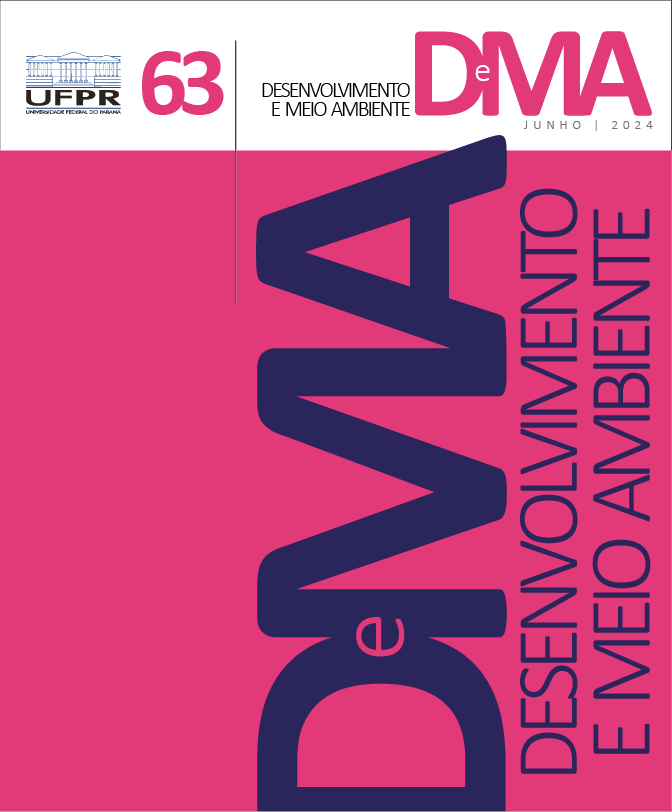The impact of land use/land cover change in suburban subdivisions on surface runoff: the case of the Gated Community Alto da Boa Vista (Federal District, Brazil)
DOI:
https://doi.org/10.5380/dma.v63i0.89743Keywords:
land tenure regularization, environmental deterioration, subdivision impacts, catchment hydrology, urban planning.Abstract
Environmental damages are inherent to urbanization processes and therefore need to be carefully measured and mitigated, especially those that affect hydrological regimes, because they reverberate beyond the urbanized area and reach the entire watershed. Although essential for mitigating environmental damages affecting suburban subdivisions, drainage systems and rainwater management are usually given secondary status during urban land planning. The present study evaluated the implications of the absence of adequate subdivision planning, focusing on the process of occupation and regularization of the Gated Community Alto da Boa Vista – in the Sobradinho Administrative District (in Brazil’s Federal District). Our sources were land regularization documents, data on rainfall, soil typology and remote sensing imagery. The images allowed us to detect changes in soil cover over several years and to identify resulting changes in infiltration and runoff. Data analysis showed that faulty attention was given to environmental and urban aspects during the planning phase and the installation of the gated community and contributed to the occurrence of erosion processes. It was found that it is necessary to improve public management routines to expedite the granting of urban and environmental licenses, in addition to defining technically adequate and integrated requirements for the installation of drainage systems and the management of rainwater runoff in areas affected by urban expansion.
Downloads
Published
How to Cite
Issue
Section
License
Copyright on works published in this journal rests with the author, with first publication rights for the journal. The content of published works is the sole responsibility of the authors. DMA is an open access journal and has adopted the Creative Commons Attribution 4.0 Not Adapted (CC-BY) license since January 2023. Therefore, when published by this journal, articles are free to share (copy and redistribute the material in any medium or format for any purpose, even commercial) and adapt (remix, transform, and create from the material for any purpose, even commercial). You must give appropriate credit, provide a link to the license and indicate if changes have been made.
The contents published by DMA from v. 53, 2020 to v. 60, 2022 are protected by the Creative Commons Attribution-NonCommercial-NoDerivatives 4.0 International license.
DMA has been an open access journal since its creation, however, from v.1 of 2000 to v. 52 of 2019, the journal did not adopt a Creative Commons license and therefore the type of license is not indicated on the first page of the articles.




